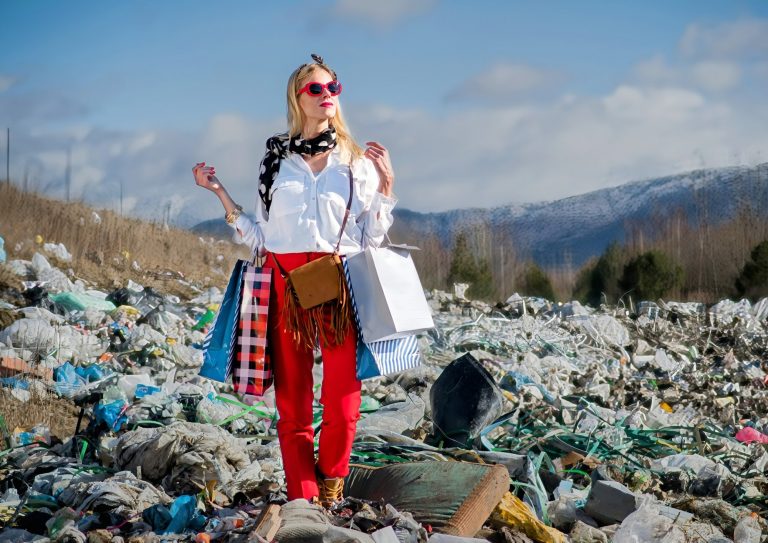You know those little tags on our clothes? Sure, they’re annoying, especially when they rub against your skin and make you itchy. But they’re packed with a lot more information than you’d think. Tags can tell us a lot about the clothes we wear and their impact on the environment. Recent studies have discussed how the fashion industry is a major contributor to the environment with its plastic waste.
The driving force behind this discovery was Professor Richard Venditti of North Carolina State University, an expert in paper science and engineering.
Supported by a talented team of researchers, Professor Venditti presented some startling statistics about the frightening impact the fashion industry has on environmental pollution.
Plastic waste from the fashion industry
The fashion industry hasn’t always had a bright spot in its news headlines, with stories of poor working conditions, disappointing wages, and a fast-paced “fast fashion” culture that have rocked the industry time and again.
But Professor Venditti’s recent research draws our attention to an even more worrying issue: plastic leakage.
“We analyzed data on imports, exports and clothing production for countries around the world,” Venditti said, “and compared that to existing global information on the different stages of the clothing value chain to estimate how much plastic is leaking into the environment at each stage.”
Environmental impact
“A lot of the plastic waste that leaks into the environment comes from discarded clothing, especially synthetic clothing,” Venditti said.
“There’s also waste from manufacturing and packaging, tire wear during transport, and even microplastics that get pulled into water when we wash our clothes.”
In 2019, the fashion industry produced an incredible 20 million tonnes of plastic waste. The fashion industry’s dirty secret lies in the plastics used in synthetic clothing materials such as polyester, nylon and acrylic, and in packaging. Around 40% of this ends up polluting the environment.
Who are the bad guys?
Synthetic apparel has been found to be the fashion industry’s biggest polluter, producing 18 million tonnes of waste in 2019 alone. In the same year, these dark horse synthetic fabrics generated 89% of the plastic waste from the global fashion industry; nearly 8.3 million tonnes were released into the environment.
Cotton might seem like a safer option, but you’d be wrong: even the cotton we love contributes to our plastic waste problem.
Cotton clothing is responsible for 1.9 million tonnes of plastic waste. If you add in other fibres, the total comes to 310,000 tonnes. And what about packaging? No need to talk!
Plastic waste transfer in the fashion industry
Plastic waste does not necessarily remain where the clothes were sold. Countries such as the United States and Japan, known for their “fast fashion” boom, often dispose of discarded clothing in low-income countries, which do not have proper waste management systems and therefore bear the brunt of this environmental disaster.
This means that our shopping habits in wealthy countries impact the environment in less fortunate countries.
“In countries like the US, we have a ‘fast fashion’ culture where people buy a lot of clothes and they don’t last very long,” Venditti said.
“When we throw those clothes away, they end up in landfills or, more often, at thrift stores. Some of the clothes sent to these stores are sold in the U.S., but often they are sent to other countries that don’t have waste management systems adequate to handle the volume, which is where tons of plastic ends up leaking into the environment.”
Can you solve this problem?
The study calls for major changes to the fashion industry, which now needs to move towards a circular industrial model that recycles materials rather than discarding them as waste, and promotes renewable, non-synthetic fibres.
Next time you’re shopping, take a closer look at the tag. It can tell you a lot about the impact your clothes have on the environment. Will your next purchase add to the mountains of plastic waste or lead us towards a more sustainable future?
Remember, our fashion choices don’t just define our style, they shape the kind of world we live in. Our decisions matter more than we realize.
The research is published in the journal Nature Communications.
—–
Like this article? Subscribe to our newsletter for more fascinating articles, exclusive content and updates.
Check it out with EarthSnap, a free app brought to you by Eric Ralls and Earth.com.
—–


